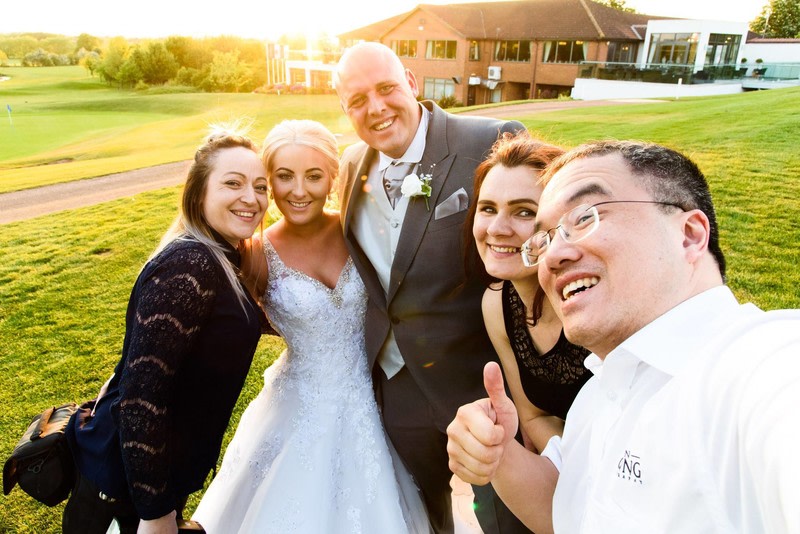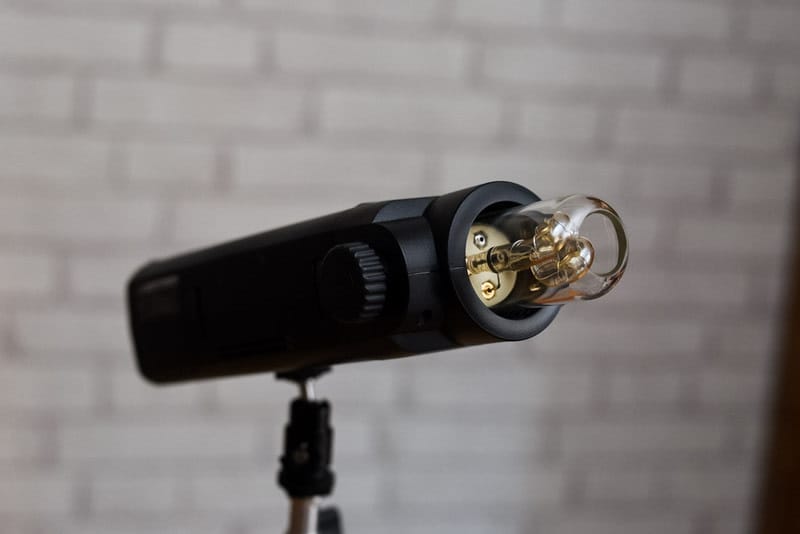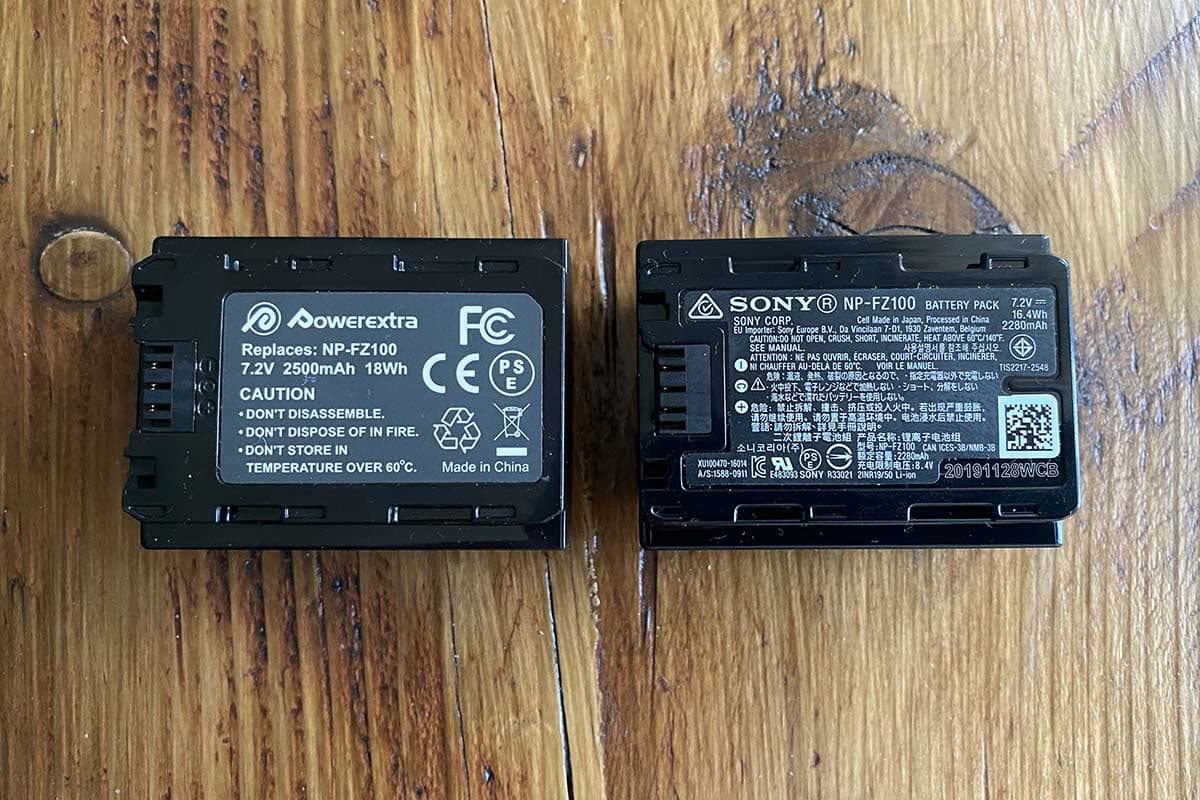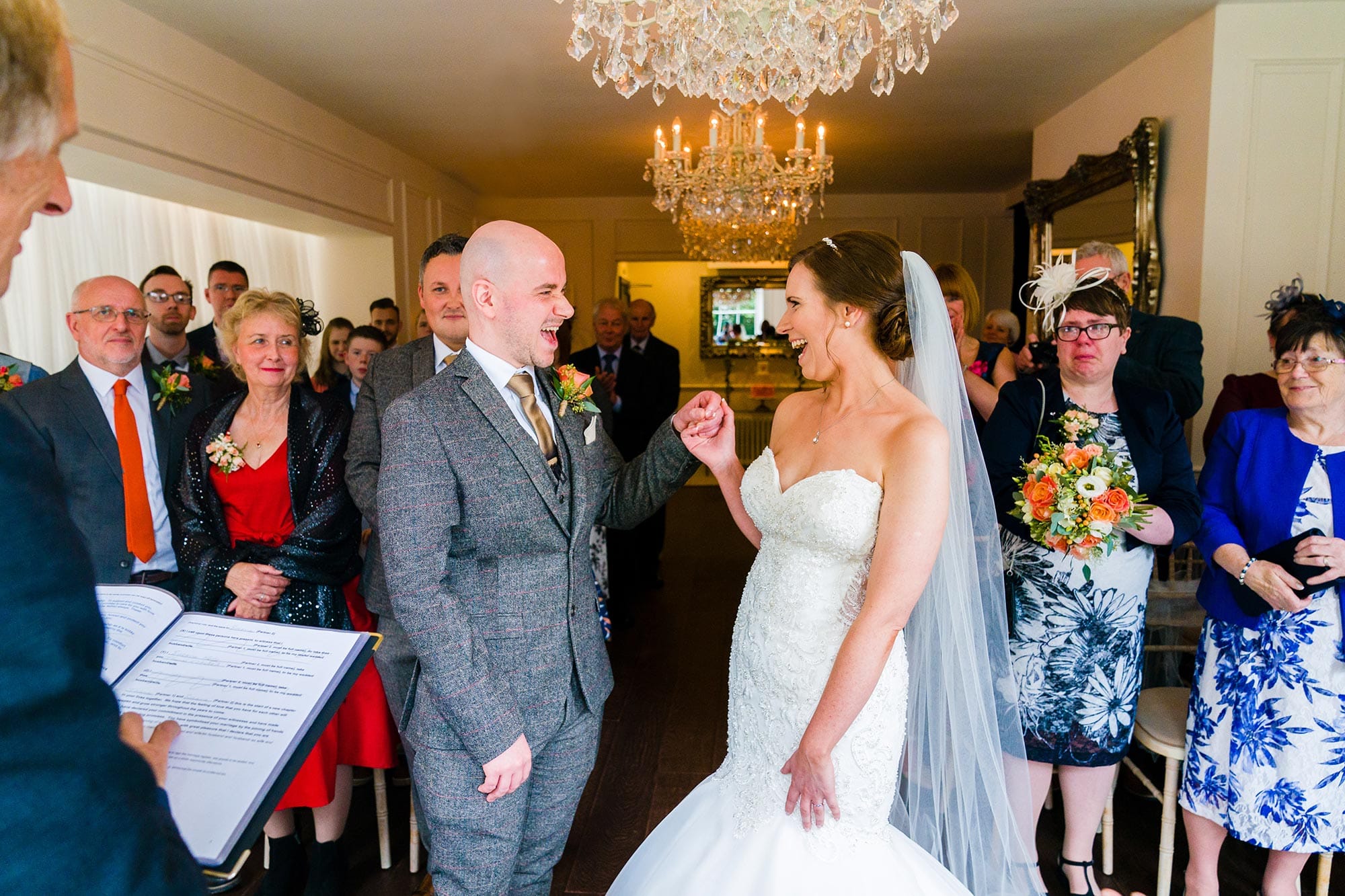
Introduction
In 2017, I made the decision to sell my Nikon equipment and move to Sony. I’ll explain my personal reasons later but now two years later, it seems more and more people are moving to Sony too. I’m now in the position where I own all three of the third generation Sony full frame cameras currently on the market. Namely, the Sony A9, A7r3 and the A7iii.
As a result, I feel I’m in a good position to comment on how each of them perform and discuss which I feel is the best wedding camera for wedding photographers.
In this article I will be comparing just the full frame generation three cameras. The APS-C A6x00 and the older generation models such as the A7r2, A7s will not be compared. Let me know if you’d like me to do that and if enough people message me, I’ll consider it.
Reasons I switched from Nikon to Sony
When Sony first announced the A9. The game changer for me was the full silent shooting with zero blackout. Now let’s be clear, silent mode isn’t a new thing. It’s actually quite a common feature on mirrorless cameras. I’ve had it on my Panasonic cameras for years and it’s been in other mirrorless cameras too. But what Sony did was to all but eliminate the common issues around silent shooting. Namely the warping when movement is fast and the banding which is commonly caused by LED lights. (More on this later)
As a wedding photographer, being able to be quiet and discrete is a great advantage. There are many situations where you don’t want to be the centre of attention, distracting everyone with the clacking of your shutter. For example, during the ceremony when the bride & groom are exchanging vows. Or the special moment when dad first sees his daughter in her dress. You don’t want this moment being distracted with 'clack! clack!’
It’s really hard to describe how liberating being able to shoot silently at all shutter speeds with no blackout is until you’ve tried it and got used to it.
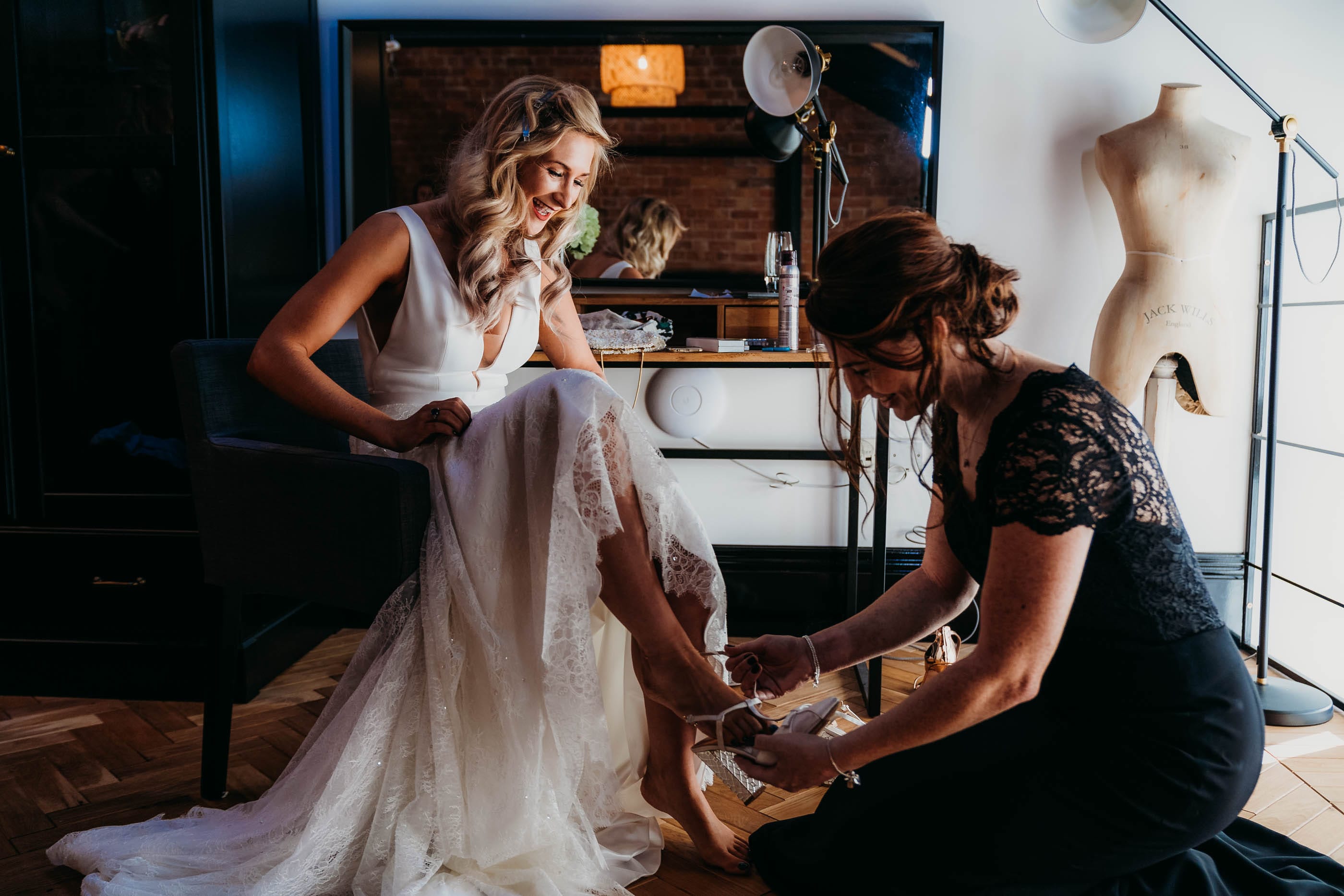
The other advantages for the third generation of Sony cameras was the introduction of the larger Z battery and the dual card slots. The new battery means I can shoot most of a wedding day on a single battery, switching to a fresh one in the evening. Previously shooting with Sony mirrorless cameras meant carrying a small bag of batteries with you. Changing at regular intervals. Finally having dual card slots gives me the security of knowing all is not lost if a memory card fails.
At last, Sony felt like it had released a camera that was ready for professional wedding photographers to use.
Side by Side Comparison
Whilst specs are important, they’re not the be all and end all. But let’s have a quick look at the key features side by side before we discuss the features in more detail below.
| Camera | Sony A9 | Sony A7r3 | Sony A7iii |
| Megapixels | 24 | 42 | 24 |
| FPS | 20 / 5 (mech) | 10 | 10 |
| AF points | 693 | 425 | 693 |
| Video profiles | No | Yes | Yes |
| Monitor pixels | 1.4 million | 1.4 million | 920k |
| Fastest shutter | 1/32000 | 1/8000 | 1/8000 |
| Silent Shutter | Yes | Yes | Yes |
| Camera | Sony A9ii | Sony A7r4 | Sony A7s3 |
| Megapixels | 24 | 61 | 12 |
| FPS | 20 / 10 (mech) | 10 | 10 |
| AF points | 693 | 567 | 759 |
| Video profiles | No | Yes | Yes |
| Monitor pixels | 1.4 million | 1.4 million | 920k |
| Fastest shutter | 1/32000 | 1/8000 | 1/8000 |
| Silent Shutter | Yes | Yes | Yes |
Resolution
If you want a camera with more than 24 megapixels then you will be leaning towards the R line of cameras. The A7r3 has an impressive 42MP versus the gigantic 61MP on the R4! For many wedding photographers, having 42 megapixels is actually a burden rather than an advantage. And 61MP is simply a total overkill.
An A7r3 RAW file is roughly 40MB compressed and 82MB without compression. Whilst A7r4 RAW's weighing in at 61MB compressed and 122MB uncompressed! :O That's a lot of data that mounts up quickly.
I really wish Sony had included a medium RAW option like Nikon have on the D850. That would have been ideal. I'm surprised they haven't.
Whilst I quite like the ability to crop into my images, I can certainly understand why for many wedding photographer's, it is a burden rather than a plus.
After all, we all managed fine with 12 & 16 megapixels before 24 megapixels seemed to become the norm.
Speed (FPS)
One important thing to note is that the Sony A9 series slows down when you are using the mechanical shutter to ‘only’ 5 frames per second and 10fps on the A9ii. This is a huge drop from the blisteringly fast 20fps with the e-shutter. However, when you step back and think about it. Is 5fps with flash not enough for a wedding photographer? I would argue it’s fine. All the other cameras can fire the mechanical shutter at 10fps. It wasn't that long ago before 10fps was the territory of Canon/Nikon flagship cameras like the 1DX/D4. Now even the 'entry level' A7iii can achieve 10fps!
Without flash, the A9/A9ii can do a ridiculously fast 20fps. Any faster and I might as well be shooting film. For a wedding photographer, this sort of speed is absolutely unnecessary and the only use I can think of is to willy wave at Canon/Nikon owning friends. Once that novelty wears off, you won’t use it in ‘Hi’ mode. At all.
Of course having a fast frame rate isn’t very useful if you don’t have a good buffer to keep up. Otherwise it’s all for nothing. One of my biggest gripes about my old D750 was how quickly the buffer filled. The best I could manage was 19 compressed RAW files before hitting the buffer. At 6.5fps, that was barely 3 seconds.
This is where Sony have been much more generous. The A7iii will let you shoot 33 RAW’s. The A7r3 is 28 RAW’s (which is good if you consider the 42MP files it is writing) and the A9 is an insane 241 RAW’s! Interestingly the A9ii is officially 239 compressed RAW's. I guess in the real world it doesn't really make a difference.
In practice all the camera's have buffer’s are more than enough for wedding photography. I’ve literally never managed to hit the buffer on the A9. Once I accidentally selected the highest speed mode before the confetti tunnel and accidentally ended up with over 300 photos! I only noticed halfway down the tunnel when I saw the square flashing like a lunatic. But at that point it was too late to switch. So I just rolled with it!
In short, if you need the ultimate speed. The A9/A9ii are your best bet. But in reality they’re all good.
Auto Focus
The A9 has Sony’s top of the range auto focus engine and this was also given to the A7iii. The A7r3 has a different AF engine. If you’re a specs person you will also notice the A7r3 ‘only’ has 425 AF points versus 693 of its siblings. I say ‘only’ because if you’re coming from a DSLR then that is an insane amount of AF points! The reality is that the extra points on the A7iii/A9 are on the extremes of the screen. Something I have literally never missed. And if you are a DSLR shooter then you’ve never had that ability either.
On paper the A7r3 is worse but in practice it has never left me thinking “The A9 would have got that.” Autofocus performance is never a factor I consider when deciding which camera to use.
The A9ii/A7r4 & A7s3 have gotten themselves an AF upgrade. In practice the real time tracking does seem stickier but there's not loads in it. (more on the real time AF later)
Video profiles
If you are planning on shooting videos and want to shoot with picture profiles then you can rule out the A9. It simply doesn’t have them. I don’t know why. If I had to guess I think it is because the mythical Sony A7s3 will use a similar sensor and they will include profiles there. But that’s pure speculation on my part. I say mythical since at the time of writing, there’s still no announcement on this camera.
If you want the latitude of filming using SLOG or Cine4 then your choices are between the A7r3 and A7iii. In which case I’d say go for the A7iii. For two reasons. Firstly it’s way cheaper. Secondly video in low light situations is noticeably cleaner.
Monitor Pixels
One of the ways Sony have tried to justify the ‘entry level’ moniker for the A7iii is to reduce the number of pixels on the EVF and LCD. The idea being that the picture quality when you are looking at the back of the camera is worse.
In practice I’ve found this to be a total non-issue. If you have both cameras side by side then you can see a difference. Even then only if you REALLY concentrate. In day to day use, you won’t notice any difference.
Shutter Speed
I don’t think a lot has to be said here. The A9 fastest shutter speed is 1/32000 of a second. The others are 1/8000. As a wedding photographer, 1/8000 is more than fast enough for 99.9% of situations you’ll find yourself in.
Silent Shutter
I’ve saved the best til last! Yes, all three have silent shutter but the A9’s is different. Very different. Let’s firstly talk about the ‘normal’ silent shutter which is on the A7iii & A7r3. Yes, it is silent but they suffer from two main issues. Banding and distortion. You will see banding occur in some artificial lighting situations. In the UK this can be compensated by shooting at 1/50 or 1/100. In the US that would be 1/60 or 1/125. You can google why but in the interests of brevity, I’m not going to go into it here.
The other biggest disadvantage with silent shutter technology is the distortion if your subject is moving.
As a result, silent shutter isn’t something we used a lot. Even if we did, it was very much limited to during certain parts of the wedding day. Such as the ceremony or speeches. Situations where people aren’t expected to be moving quickly or at all. But for the rest of the day, the traditional mechanical shutter clack clacked away.
That’s where the A9 made me sit up and pay attention. Sony practically eliminated those issues with their electronic shutter. I’m not going to go into a long explanation about why. It’s long & boring. Suffice to say that I can use any shutter speed and don’t need to worry about banding or distortion.
The other great feature of the A9 is the blackout free shooting. Whilst you don’t NEED this for wedding photography. It does make your whole shooting experience much more fun!
DEMO OF THE SILENT SHUTTER FEATURE – (NOTE: YOUR AUDIO ISN’T BROKEN…IT’S SILENT!)
Firmware Upgrades
One of my biggest frustrations shortly after getting the A9 was that Sony put some new features into the A7r3 and subsequently the A7iii that were not in the A9. The two that I most wanted were the touchpad AF when using the EVF and the rating feature.
In case you don’t know. On the A7r3/A7iii you can use your thumb to move the AF point around the screen whilst using the EVF. Without that on the A9, it would be difficult to use at a wedding since I’d be constantly having to think about which camera i am using.
The rating feature is handy for if I’ve taken a great shot. I can rate this in camera and it will carry over when importing into Lightroom. In short, I can start doing some culling directly in camera.
In late March, Sony released firmware 5.0 for the Sony A9. This has much anticipated update brought this camera up to date with the features mentioned above. Both touchpad AF and in camera rating are finally there.
The most exciting addition for us wedding photographers, is the new real time AF tracking mode. This new and exciting feature uses AI based object recognition to track objects. The camera can automatically detect eyes and faces without having to press the eye AF button. The tracking is now insanely accurate. Even when your subject turns away from the camera, the A9 will continue to track the subject and reacquire the eye/face as soon as it’s available again.
It’s not perfect. It can still occasionally jump to a different subject. But over the past three weddings, I’ve switched to using this tracking mode full time now. On balance, I miss less shots than using the old AF spot on subject method that most of us used to use.
Here is a promotional video from Sony which should explain the new real time AF tracking better than I am probably describing it.
Sadly, Real Time AF tracking is not planned to be released for the A7iii & A7r3. As of right now it is only available on the A9 and strangely the A6400.
Here is a short video I filmed on our wedding cake topper. Crazily enough, the Sony camera recognises the face and eye’s on the ‘bride & groom’
The new eye AF algorithms make eye auto focus even quicker and more accurate. I’ve noticed it is definitely more responsive. You don’t have to have a separate eye AF button assigned anymore. Half pressing the shutter or AF On (if you use back button focus) works now for eye AF. These algorithms and the half press shutter for eye AF will be available for the A7iii & A7r3 on April 11th.
My Switching Experience
One of my first thoughts when I started using the Sony mirrorless cameras was how antiquated DSLR’s felt in comparison. It’s like you’ve suddenly graduated from flying Spitfire’s to jumping into a F35. Looking through the EVF and having all that information there for you. Seeing your exposure change as you adjust your settings. It just makes DSLR’s feel primitive.
The ability to put your focus point anywhere on the screen has meant I have switched from using AF-S mode on my Nikon’s to using AF-C full time. I’m no longer constrained by the little rectangular box that my AF points are in. If you think about it, it’s crazy. In 2019 why am I limited to putting a focus point in the centre parts of my screen only? It just makes no sense!
The real time tracking has raised the bar higher for Sony’s competitors. They surely now need to raise their game if they hope to compete. Auto focus is now so good and so accurate that I don’t even need to worry if the bride spins around, someone briefly walks past. The camera is smart enough to keep going. Yes for now it is A9 only. But you can bet it will start to appear on every new release of camera. As the A6400 has shown.
One of the benefits I don’t think much about anymore is the fact I no longer need to calibrate my lenses to my camera body. With mirrorless cameras (not just Sony), micro adjusting your lenses is a thing of the past. No more staring at an image which is slightly out of focus and thinking “I could have sworn I nailed that shot….oh heck. Do my lenses need calibrating again???” With mirrorless, if you miss focus then you only have yourself to blame. The photo below is a 200% crop from a wedding I recently shot. Sharpness like this is pretty much par for the course now.
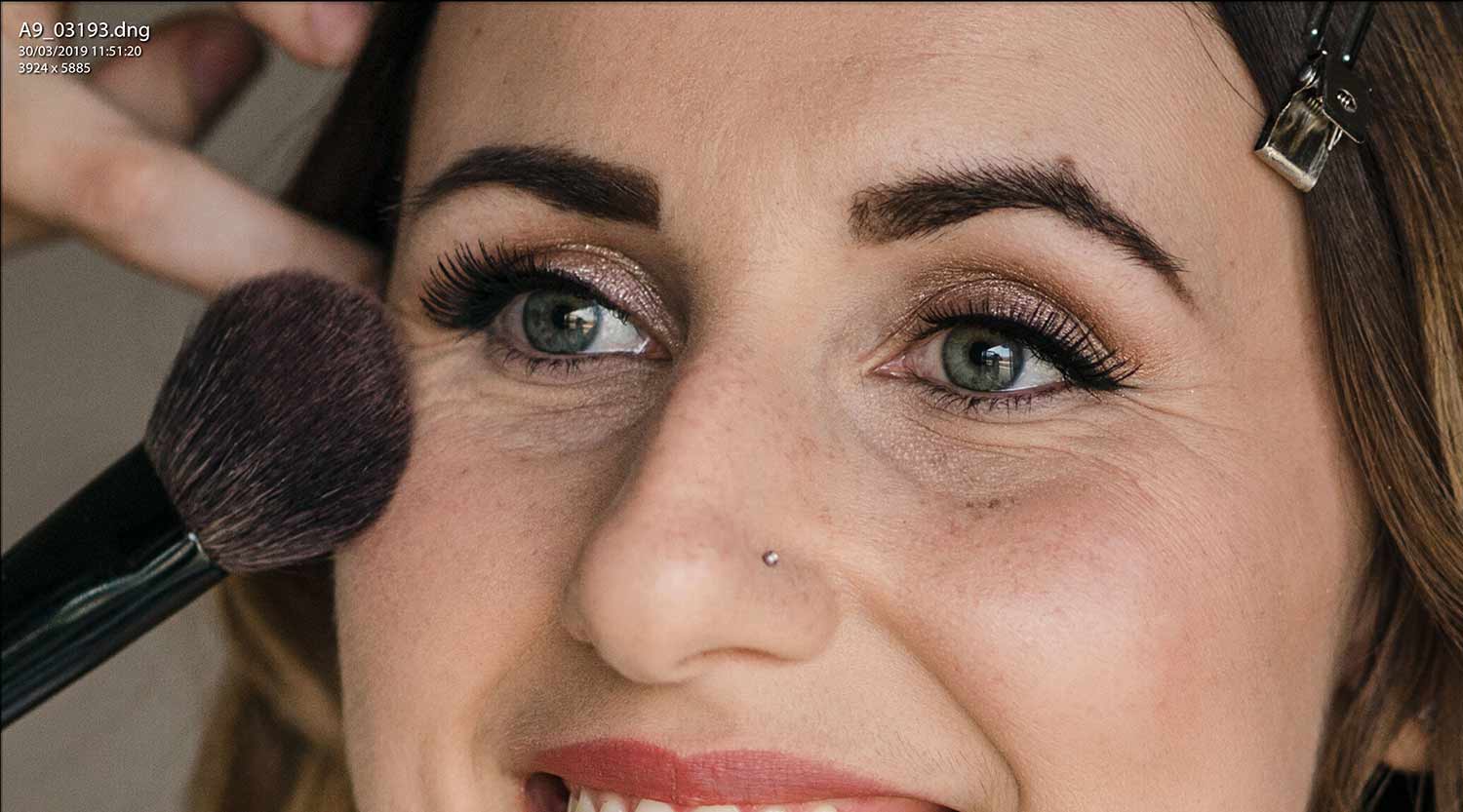
The Silent Shutter Again!
The silent shutter has made me really enjoy the documentary side of being a wedding photographer. It has also allowed me to shoot in situations where I probably would have been banned. Registrars and vicar's attitudes have changed for the better once I've shown them I make no sound.
I've been able to put my camera literally centimeters away from the registrar's ear, fire off a burst of 20 shots and they never knew. Try doing that with a DSLR and see what reaction you get. I can be super discrete for emotional moments such as the moment the father sees his daughter in her dress. Meaning I'm documenting the story without accidentally being part of it.
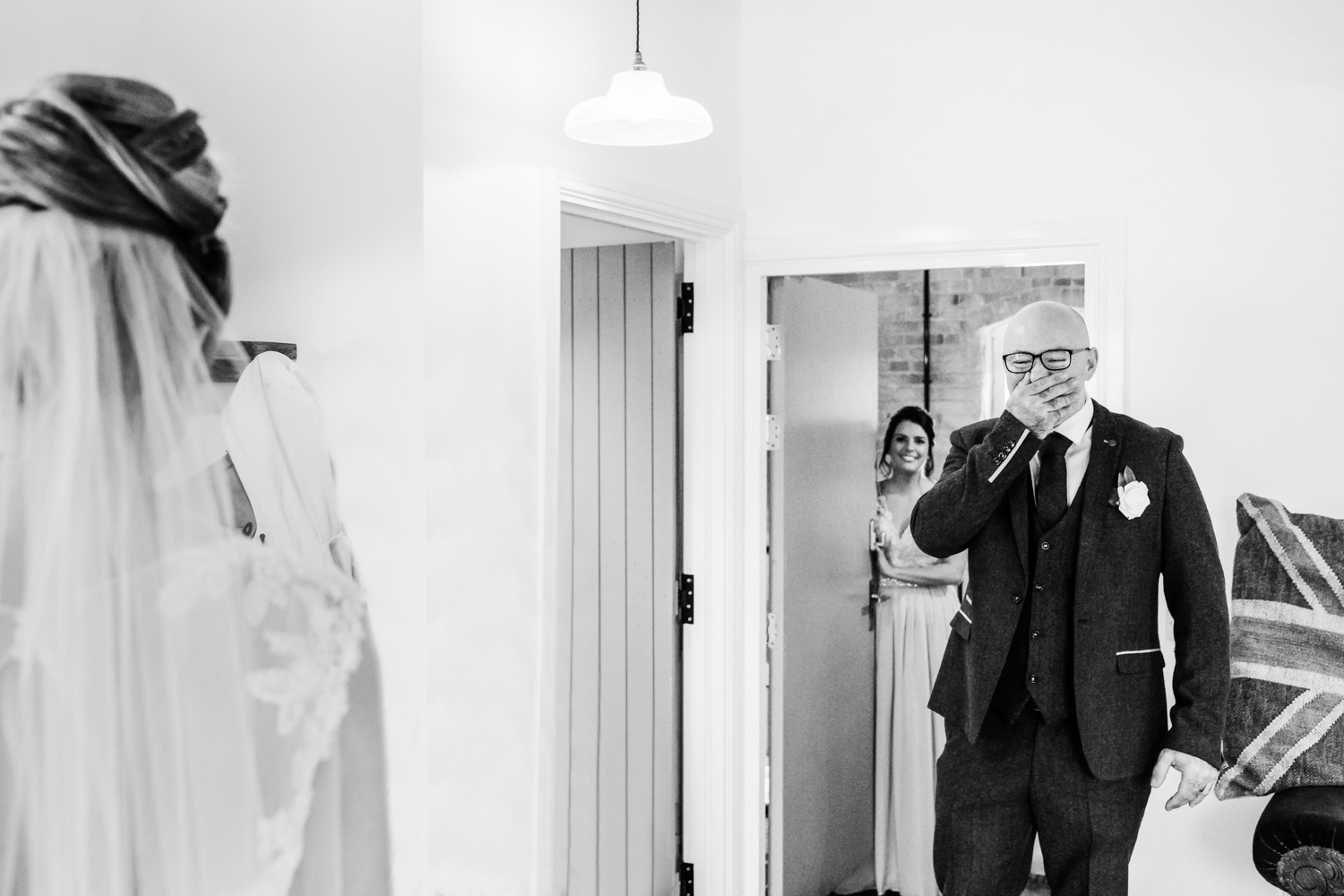
Videographers love me too. No more clacking disrupting their audio. Videographer's hate it when they're trying to edit and all they can hear whilst the bride & groom are exchanging vows is the clicking of your camera.
Shoot More & More!
The number of frames I shoot now has gone up dramatically. This seems to be consistent with others who have switched to Sony. Because we're so much more discrete. We shoot more. Some will hate this idea and consider it 'spraying and praying'. I really don't care. Personally I think it is something to embrace. Shoot through the moment and choose the decisive moment afterwards in post. No need to 'make do' with the best shot you tried to anticipate.
Luckily Sony have chosen to use SD cards for both slots. So I've upgraded from 64GB cards to 128GB. A tip for if you're switching. Use fast UHS-1 cards. Don't bother at this moment with the expensive UHS-2 cards for slot 1. Sony buffer's are so good you will be wasting your money.
The last thing I will mention is that I hadn't realised how people instinctively stop and smile at you when they think they're having their photograph taken. Even if they are talking, they hear the clicking and they turn to you and smile. For documentary parts of the day, it is the exact opposite of what I want. Shooting silent means it is much easier to sneakily take photographs to show the emotional moments your bride & groom want to see. The real moment as it was.
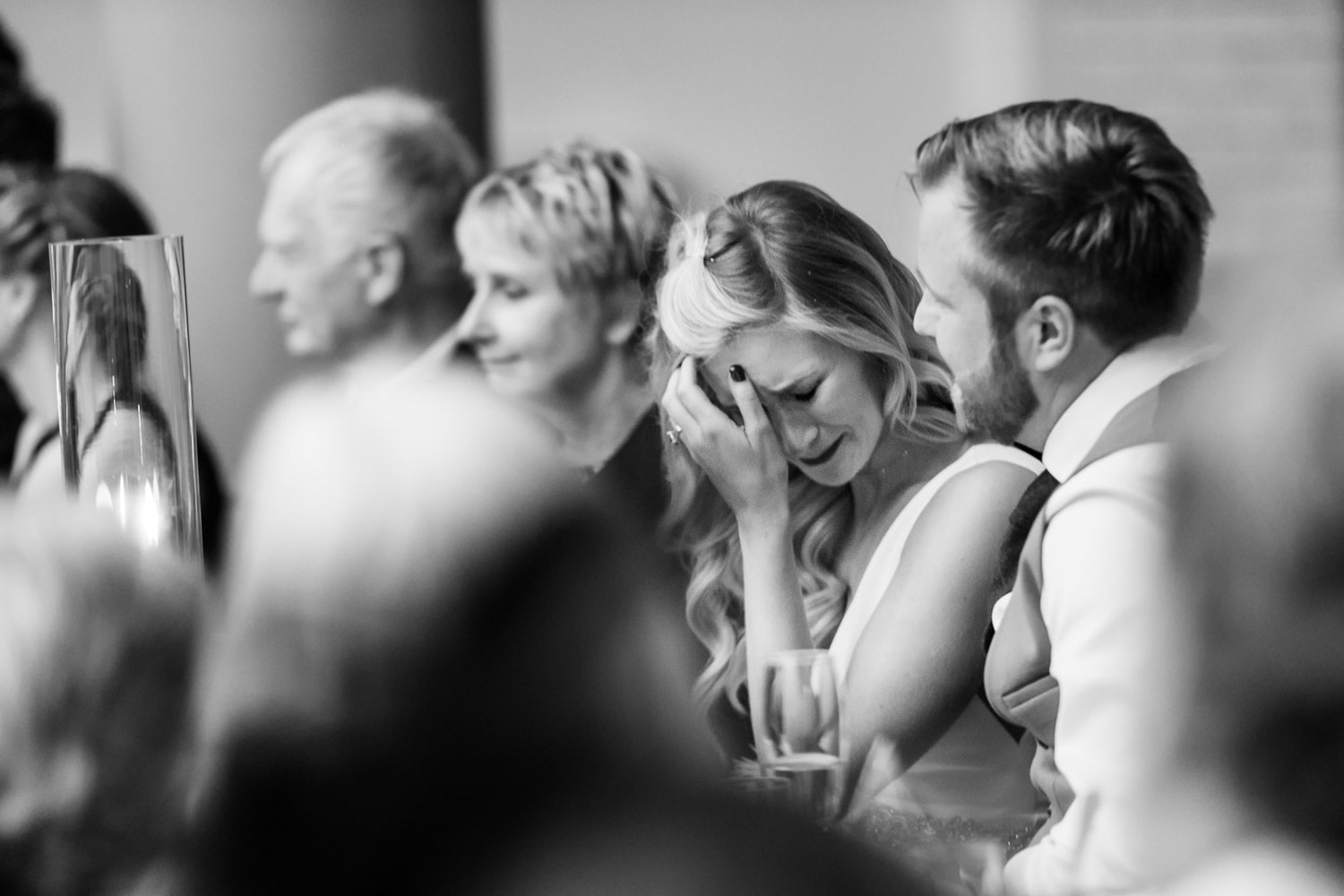
Final Thoughts
Now you're probably now thinking "Hey Martin...you've done nothing but talk about the A9. You've barely mentioned the others" And there's a good reason for that. If I am shooting a wedding, the A9 is my first choice. My backup camera is the A7r3 and the A7iii is only used for video work or as a backup to my backup.
Why? Well it should be clear by now why I favour the A9. But why is the A7r3 my second camera rather than the A7iii? Simply because of the 42MP sensor. That being said. I purchased the A7r3 before Sony announced the A7iii. If I had to make the choice now. I'd go straight for the A7iii. The extra resolution I get from the 42MP sensor is really handy for cropping but it isn't worth the price difference between the mk3 and the R3.
The A7iii is such a popular camera because of the feature set and aggressive price point. I'm guessing it has outsold the A9 by a considerable margin. Many many wedding photographer's are happily using the A7iii to produce fantastic images. It is a superb camera. Price/performance it's tough to beat. Compare it side by side with the Canon/Nikon equivalent DSLR's and even their new mirrorless cameras and the A7iii in many ways is still superior. If I didn't already have the A9 then I'd happily use the A7iii to shoot an entire wedding.
Some argue that the A9 is a bit of a one trick pony. That the A7iii has silent shutter too and you can workaround issues with lighting by matching the shutter speed to the light frequency. That for wedding ceremonies it's good enough. And it's all true. It's good enough. But I don't want good enough. I have the budget. I wanted better.
As I said earlier, it is incredibly hard to explain how liberating it is to be able to shoot silent shutter for most of the wedding day. If asked by our customers, we'll all claim to be 'unobtrusive'. But are we really if your shutter is clacking away thousands of times a day?
The Sony A9 has enabled me to get in places that I otherwise wouldn't. And capture lots of photographs I otherwise couldn't.
If you are a documentary wedding photographer then I couldn't recommend the Sony A9 enough. For you lot, this is game changing. Just get it.
For the rest of us you can't really go wrong with any of the three cameras. If you're on a budget then the Sony A7iii will do you proud.
But if I had to pick one and say which camera out of the three is best for wedding photography. In my opinion, it would be the Sony A9 of course.
If you have any questions, I'm happy to help. Feel free to drop me an email at martin@martincheung.co.uk Respectfully I ask you to contact me this way rather than use my contact form. Thank you!
Share this story

